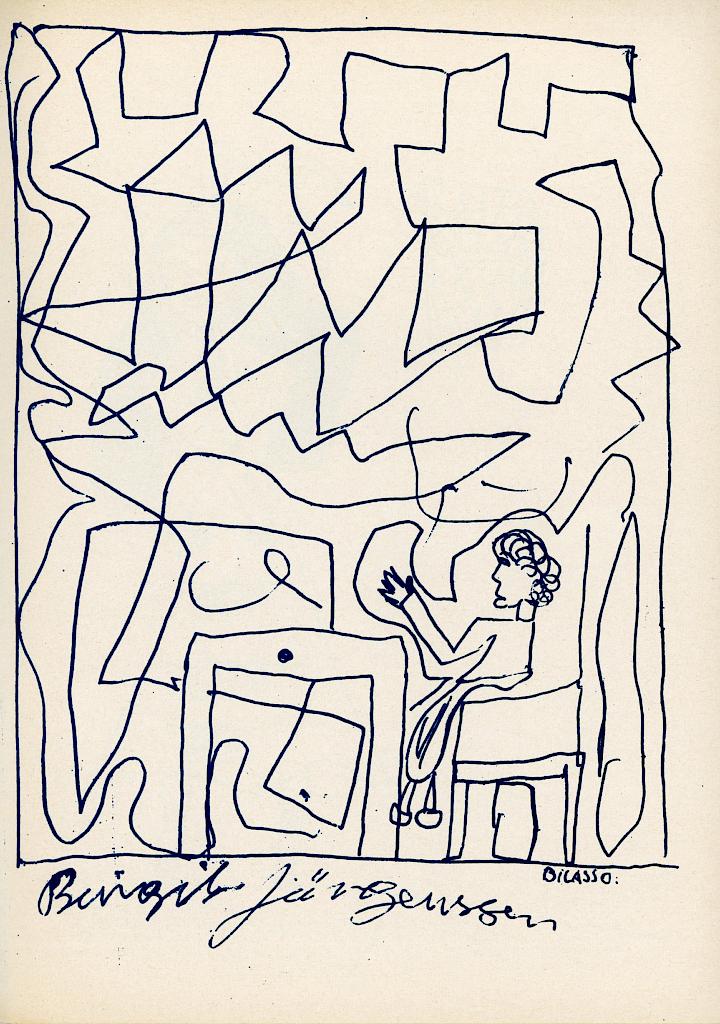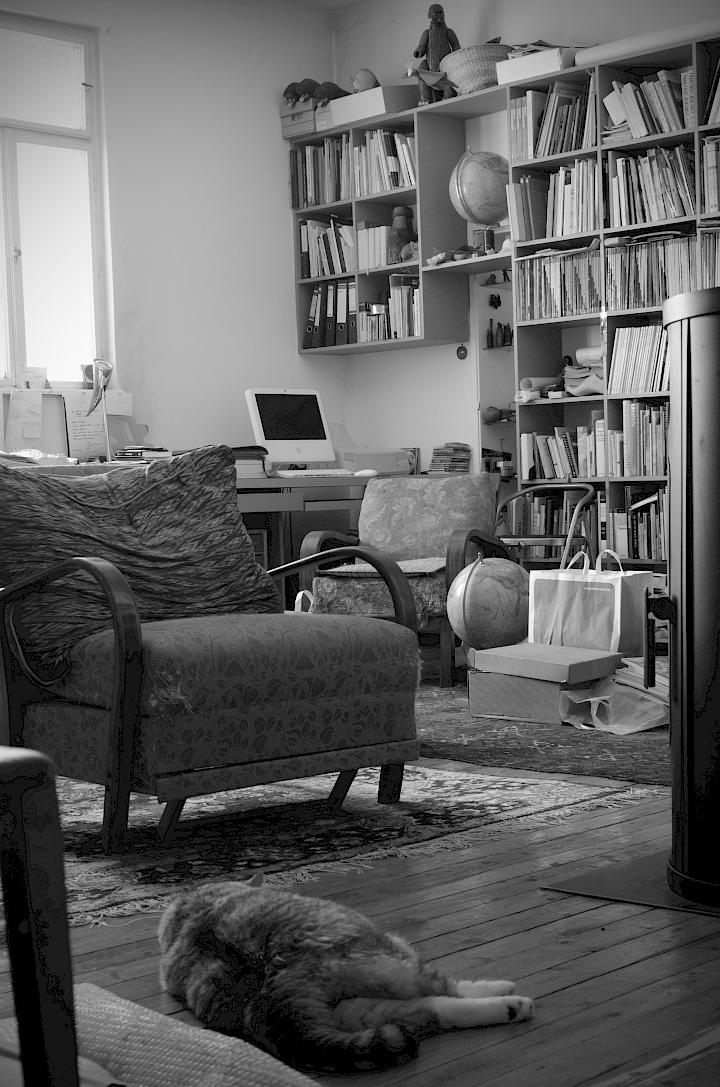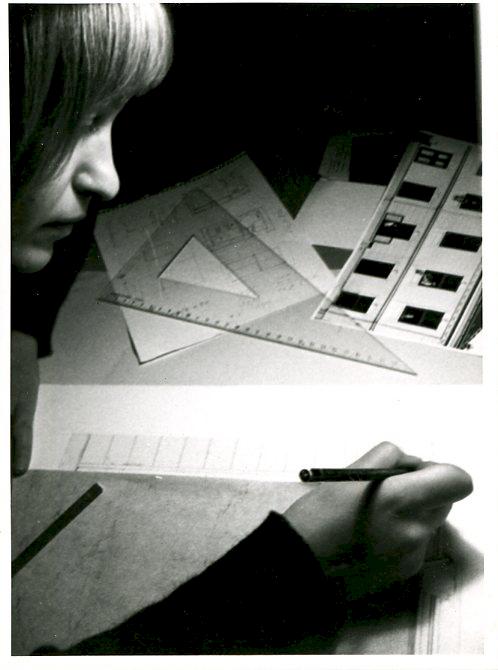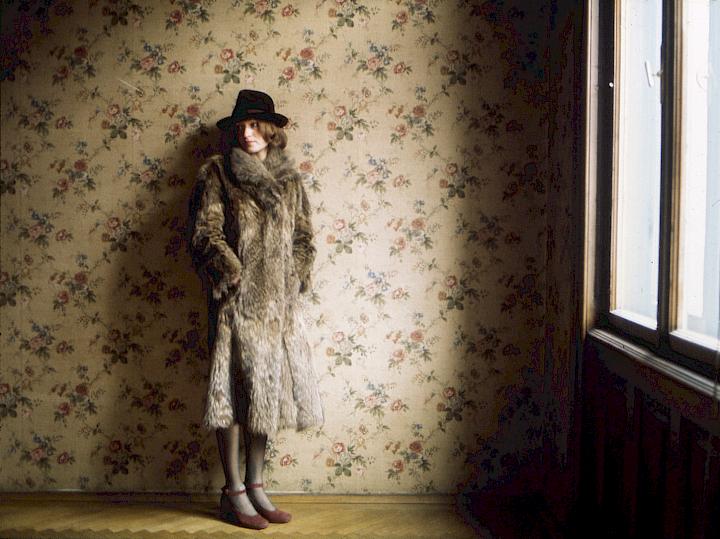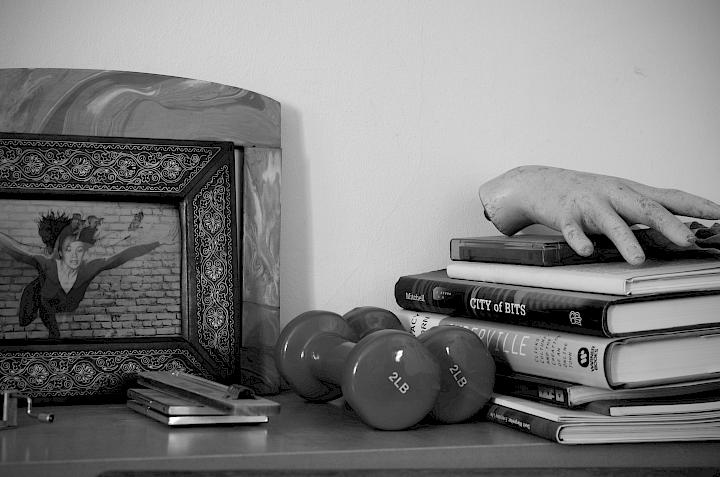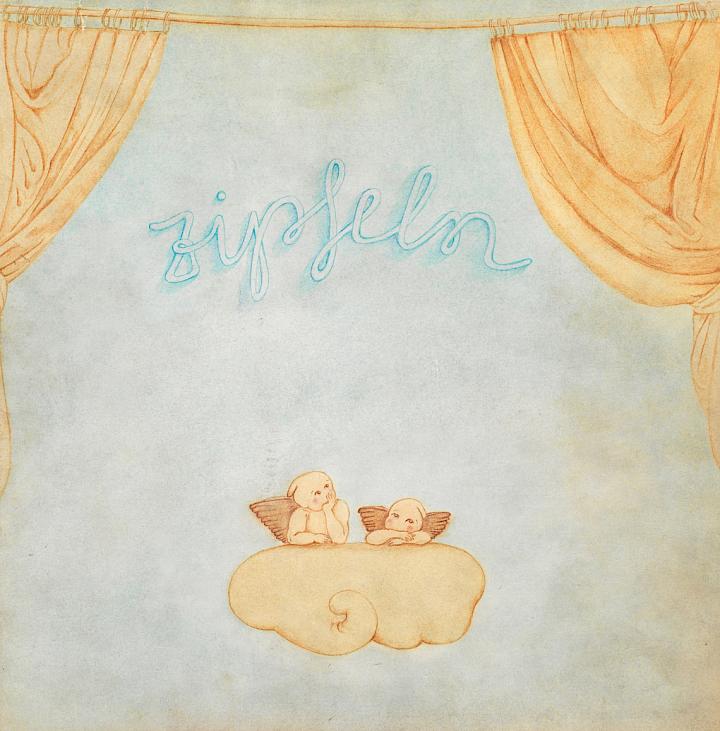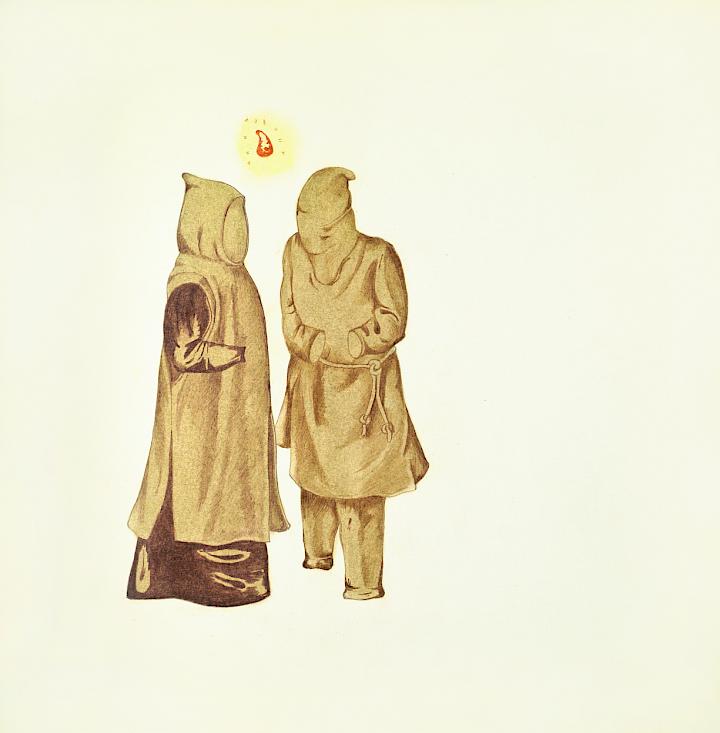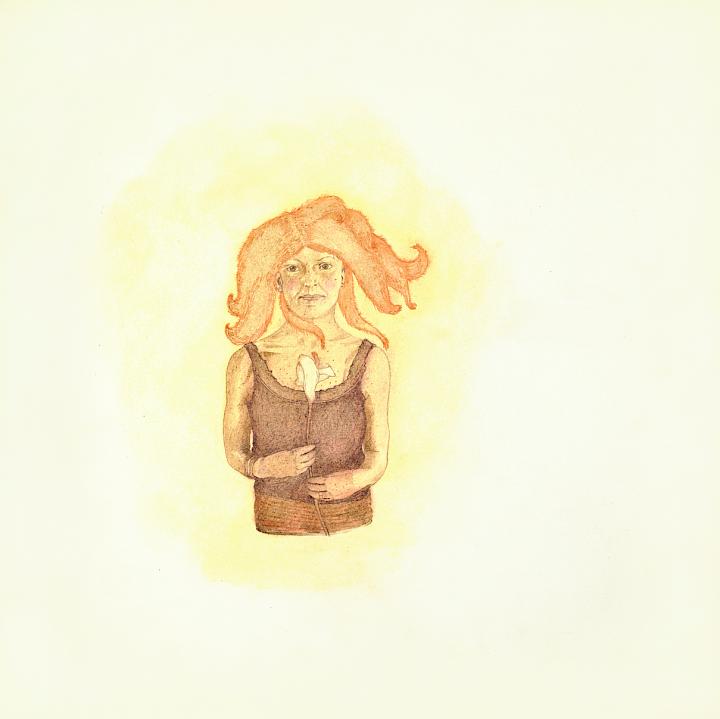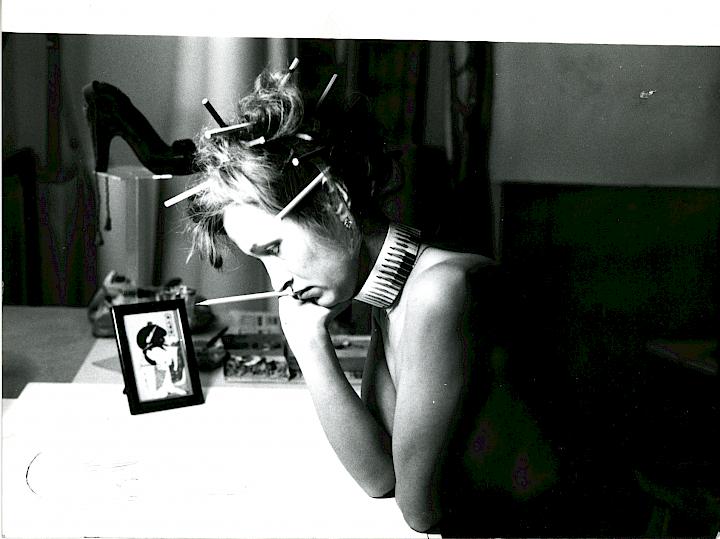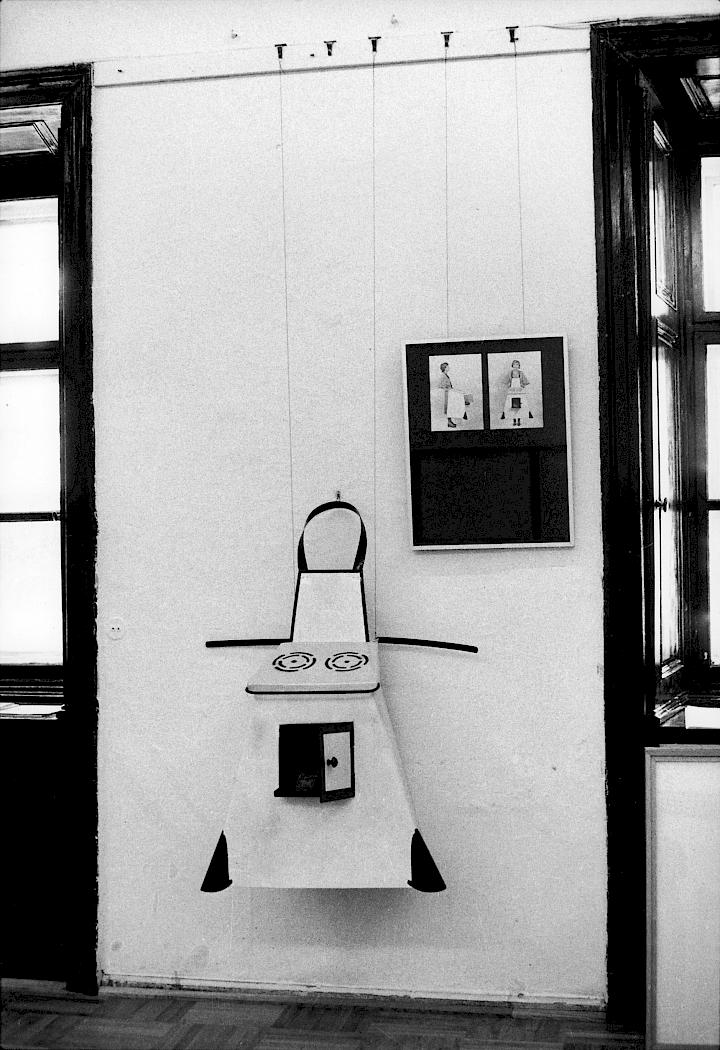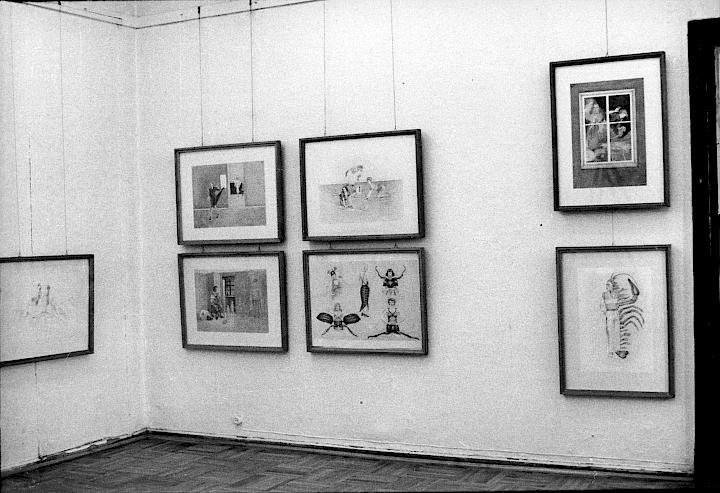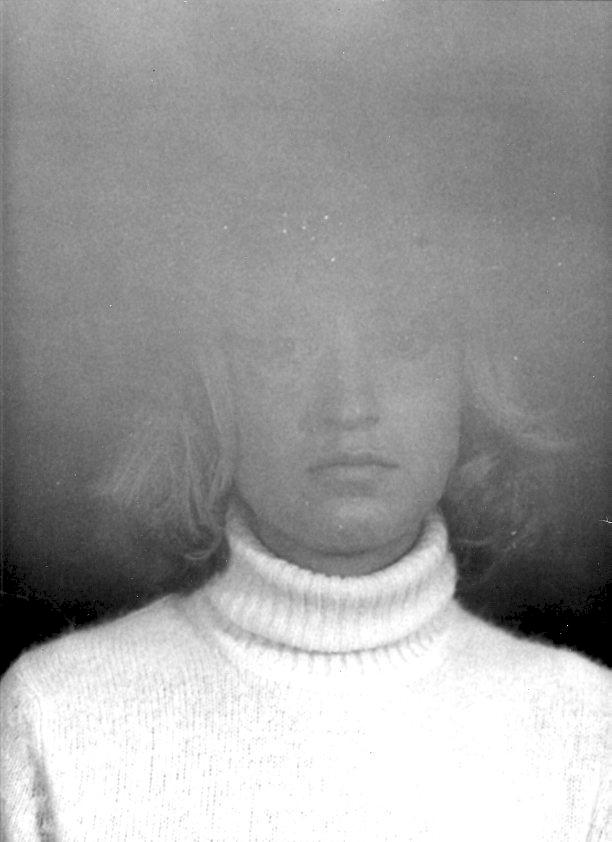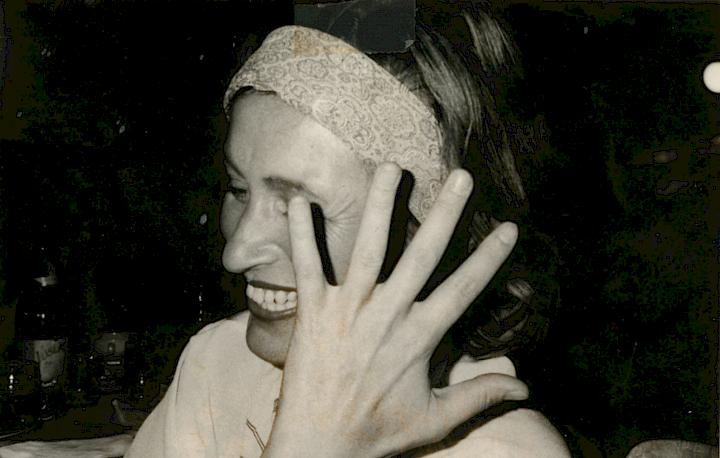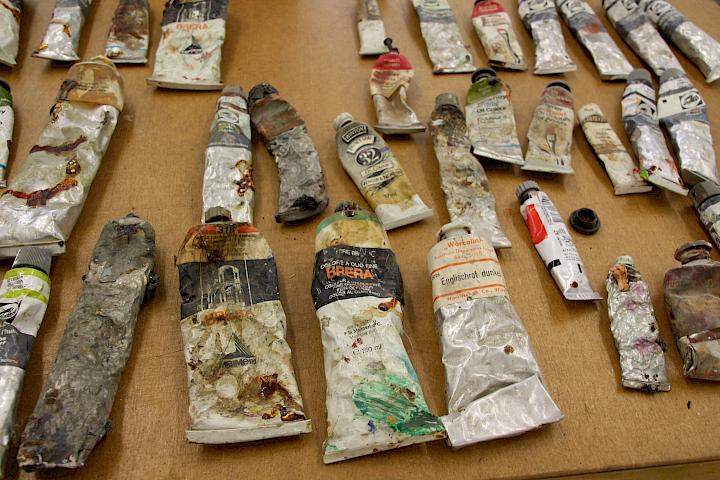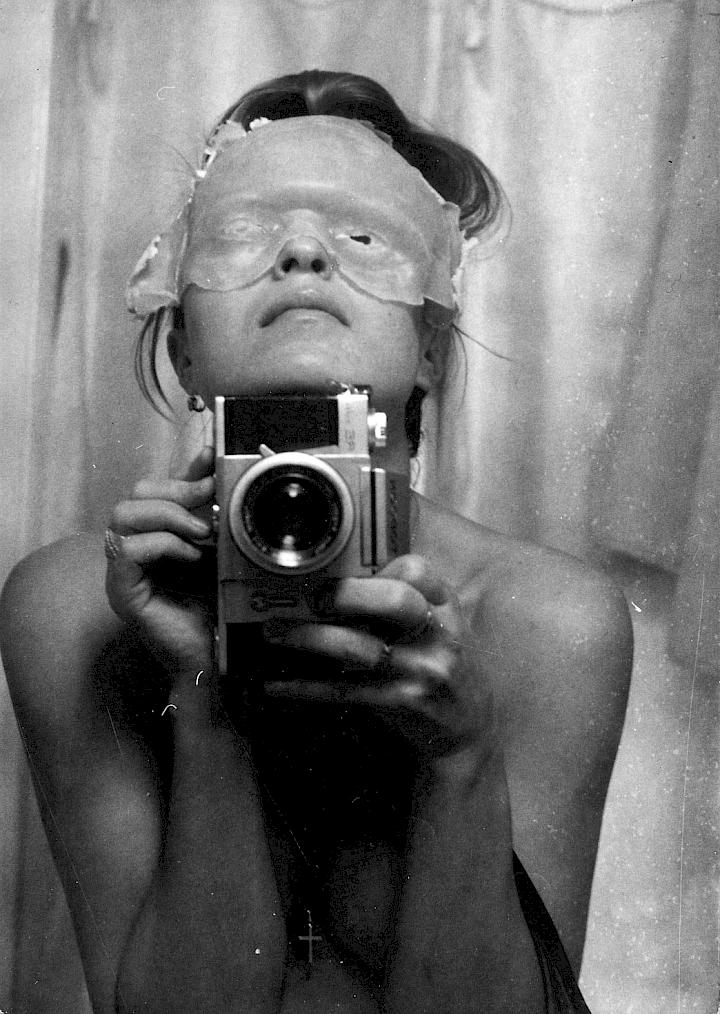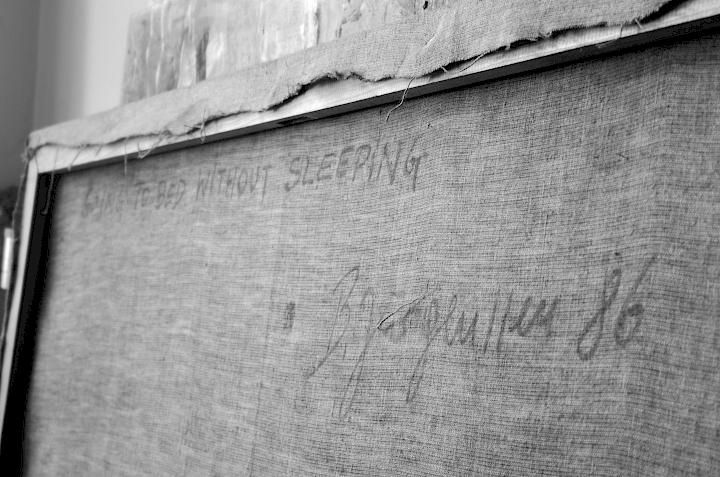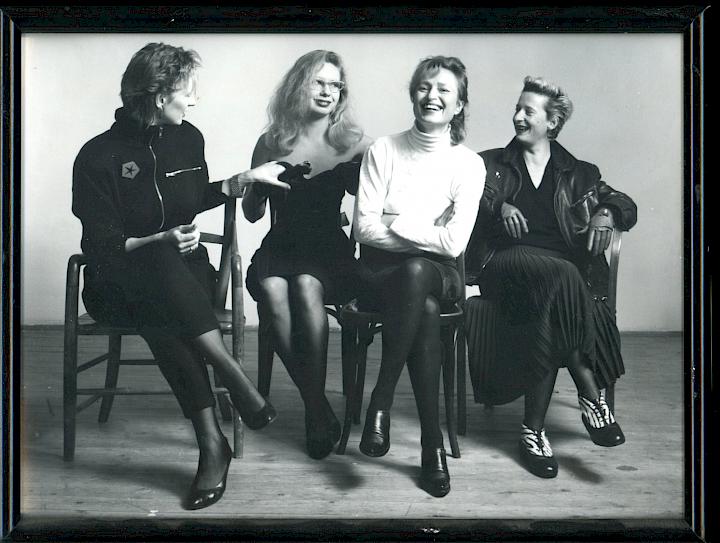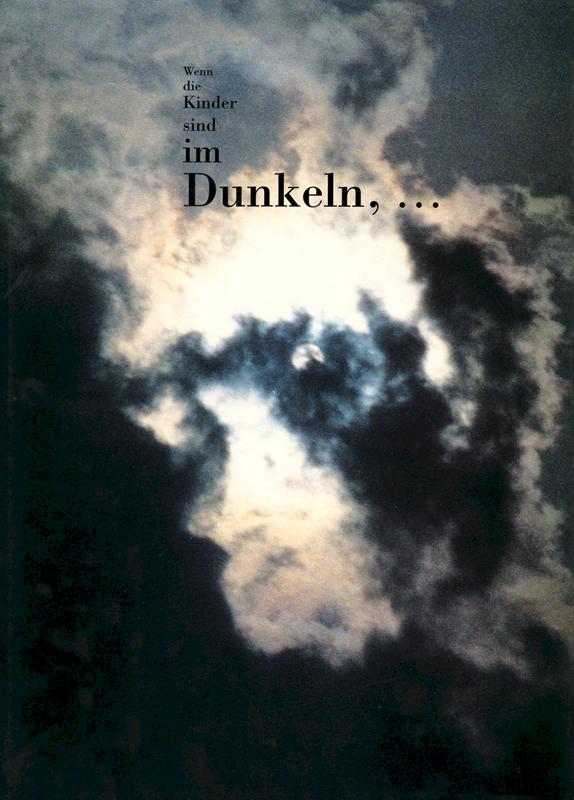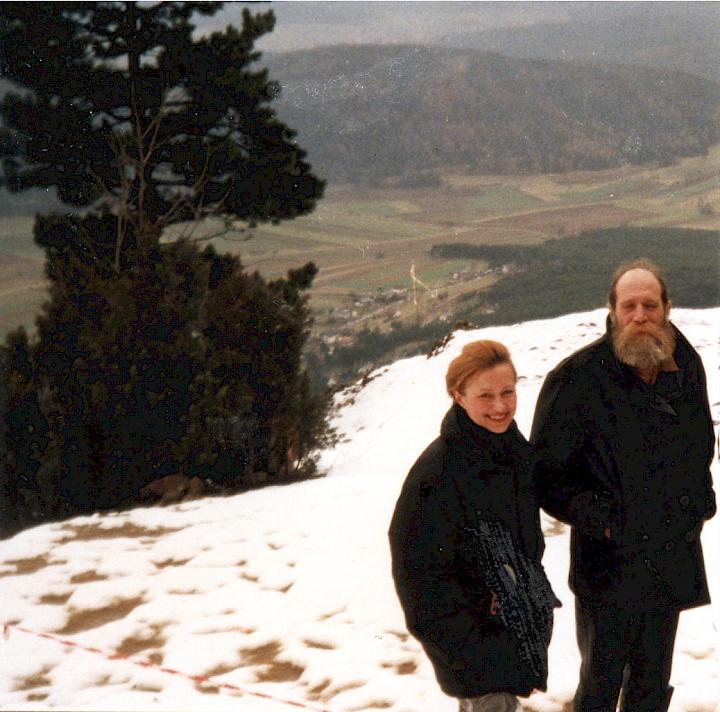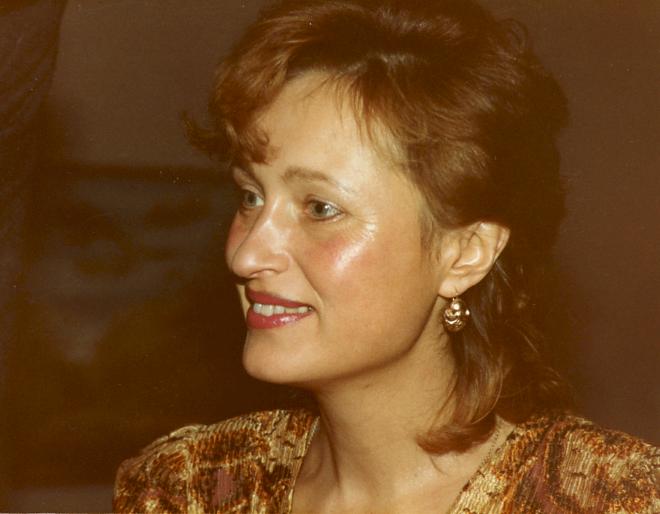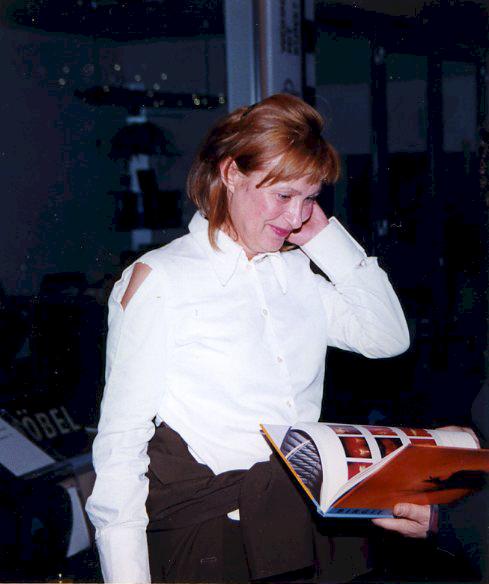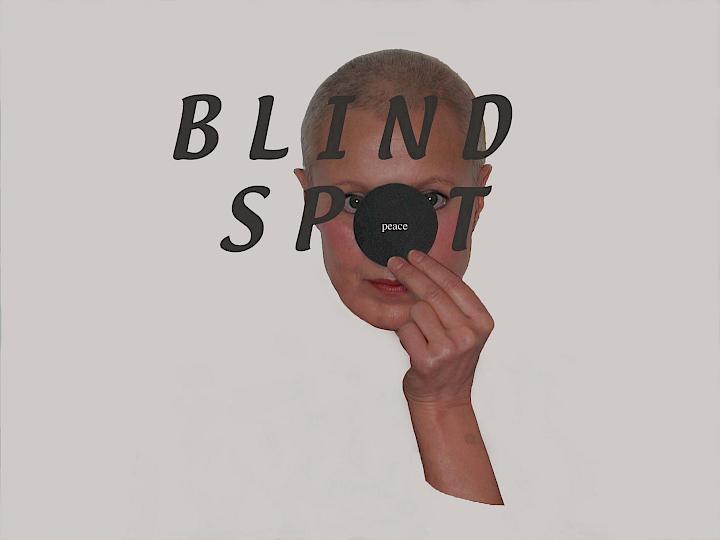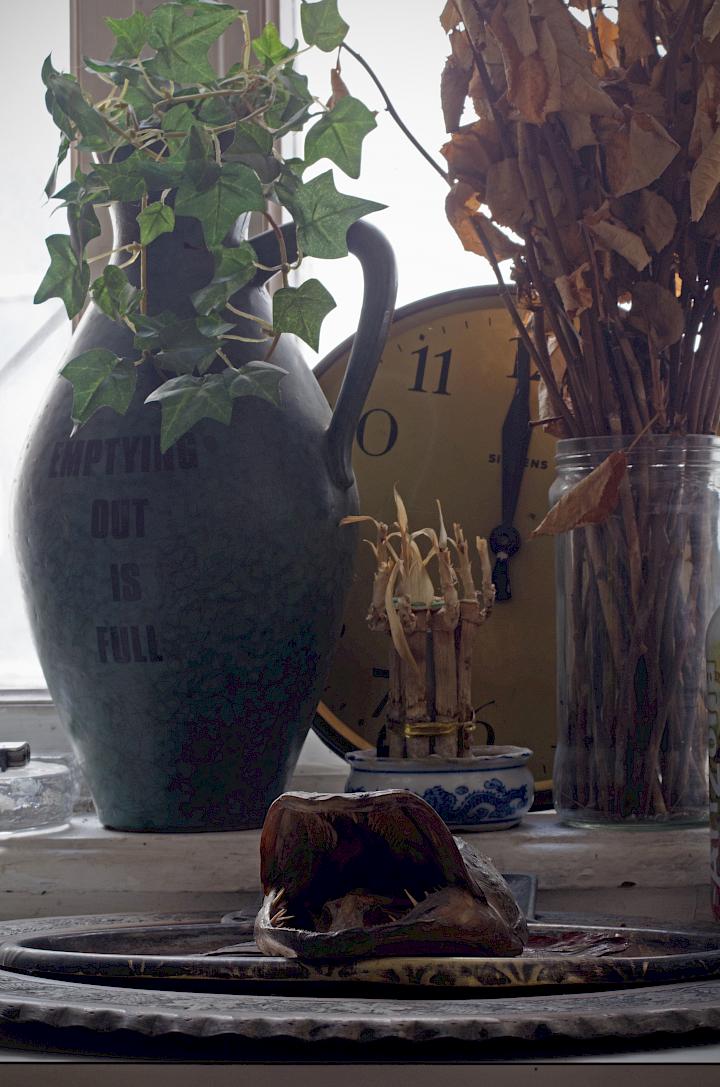As an 8-year-old she starts to draw pictures after Pablo Picasso in an exercise book. Her signature „BICASSO Jürgenssen" unites the name of the spanish maestro with her own. As a child she was called by the abbreviation „Bi".
At the age of 14 she receives her first half-automatic camera. She almost exclusively takes pictures of small objects which she has created herself before. In her early years Birgit Jürgenssen takes ballet lessons and is fascinated by Rudolf Nurejew.
„The way I remember it, I started to draw stories at the age of 8 or 9 and I would use the unwritten pages of my brother's exercise books for that. Amoung my parent's circle of friends were a few artists and lebenskuenstler. The stories they would tell us about them, respektively about the big Picasso exhibition back then in Paris and a Paul Klee book at home, aroused my curiosity so that I tried to draw after absolutely everything I liked thematically. At 14 I received my first half-automatic camera and photographed almost exclusively small objects which I had created myself before. Most of the time everything was supposed to have one color shade."
On the 30th of May 1967 Birgit Jürgenssen finishes secondary school.
During some stays in France over several months she gets to know the French literature as well as the theater of Antonin Artaud and the „inspirational poetry" of Surrealism. As a consequence she looks into psychoanalysis, the philosophy of Structuralism, the ethnology of Claude Lèvi-Strauss and the socio-critical discourse of her generation. This intellectual horizon remains constituitive for her art.
The fact that she gets into the master class in graphics of Professor Franz Herberth at the University of Applieds Arts without any basic study course is very unusual. Birgit Jürgenssen speaks her whole life with a lot of affection about Professor Herberth.
Birgit Jürgenssen graduates on the 30th of June with her diploma thesis entitled „zipfeln" (a portfolio of 42 drawings) at the University of Applied Arts Vienna. For her diploma thesis she receives the Prize of the Austrian Ministry of Education and the Wolfgang Hutter Prize.
After her graduation she applies for a scholarship abroad at the HdK Berlin and the Ecole ABC de Paris as well as for a Fulbright scholarshop for the USA (Parsons School of Design, NY; Pratt Institute, Brooklyn; Cooper Union; NY). She was also on the waiting list of the British Council for the academic year of 1972/73.
„After my graduation at the Academy I immediatley applied for scholarships in New York, Berlin and London. I fulfilled the requirements for all the three of them. But then they wouldn't accept any artists, but just scientists for New York and Berlin, for London I was one year too young. So, unfortunately, I couldn't go abroad."
On the 11th of July she marries the sculptor Bernd Hans Klinger.
She inscribes as a master student in the graphics class of Franz Herberth „to be able to continue lithographing at the University" and starts to take artistic black and white photographs autodidactically. Therefore she installs a dark room in her studio.
On the 1st of April Birgit Jürgenssen asks the DuMont publishing company in a letter to publish a miscellany on women artists: „So often the woman is an art object, rarely and reluctantly she is able to speak or show (her work) up. I for once would like to have the possibility to compare myself not just to my male, but also to my female colleagues." Her female colleagues are namely Meret Oppenheim and Louise Bourgeois whose works she finds „more poetic, less direct, and subversive". Her proposition is rejected by the publishing company. A second letter of inquiry is again rejected on the 6th of June 1979.
7th of March to 5th of April Participation at the exhibition „MAGNA – Feminismus: Kunst und Kreativität" (engl. „MAGNA - FEMINISM: Art and Creativity"), curated by VALIE EXPORT.
On the occasion of the International Women's Year Austrian female artists are invited to an exhibition at the Austrian Folklore Museum. The Jury exclusively consists of men, against which a group of popular female artists protested. Amoung them Birgit Jürgenssen, Doris Reitter, Meina Schellander and VALIE EXPORT. Since the protest is ignored, 46 female artists call off their participation at the exhibition.
„At the beginning of the 1970ies the women movement gained importance in Austria. A few supported it at the beginning and talked about the fact, that more women artists should be shown in galleries. Then some of those women became gallerists and everything they talked about was forgotten..."
On the 1st of October Birigit Jürgenssen starts working as the only associate lecturer in the master class of professor Maria Lassnig at the University of Applied Arts. On the 25th of June 1981 male and female students are protesting with a flyer that states „that the associate lecturer Birgit Jürgenssen got fired infamously" and that demands consequently „the immediate reemployment of Birgit Jürgenssen as associate lecturer for the academic year of 1981/82". Her employment at the University of Applied Arts ends on the 30th of September 1981.
On the 1st of March Birgit Jürgenssen starts her teaching activity in the master class of Arnulf Rainer at the Academy of Applied Arts Vienna. She initiates and establishes the education for the subject photography and teaches there for more than 20 years.
„The set of problems and the questions in the feminist mouvement of the seventies altered to those of the eighties. The matter of course with which female artists of today express themselves in all fields of the art is a different one, a positive one. This also has to do with the developement of the society, because the role model of the woman has changed."
Birgit Jürgenssen curates the exhibition „Wenn die Kinder sind im Dunkeln …" (engl. „When the children are in the dark ..."), Wiener Secession.
On the 24th of September she applies for a full-time teaching position at the Academy of Fine Arts, Vienna.
Exhibition „Sooner or Later" in the TZ-Art Gallery in New York, as well as the retrospective „Früher oder später" in the Oberösterreichisches Landesmuseum in Linz.
„It is the personal achievements that count. What remains in the end is just the good drawing, the good photograph, the good work."
On February 11, 2014 the Viennese municipal council committee for culture announced the naming of a public traffic area after Birgit Jürgenssen. The "Jürgenssenweg" is located in Floridsdorf in the area of the gas factory Leopoldau.


